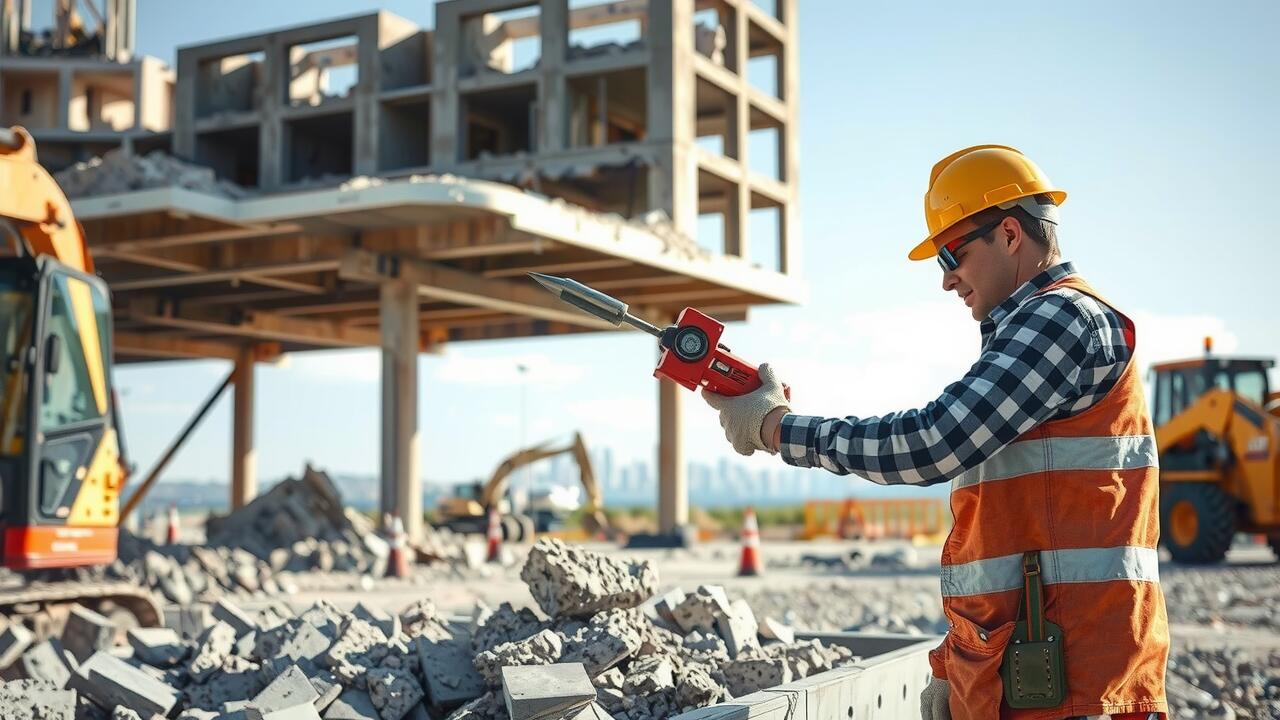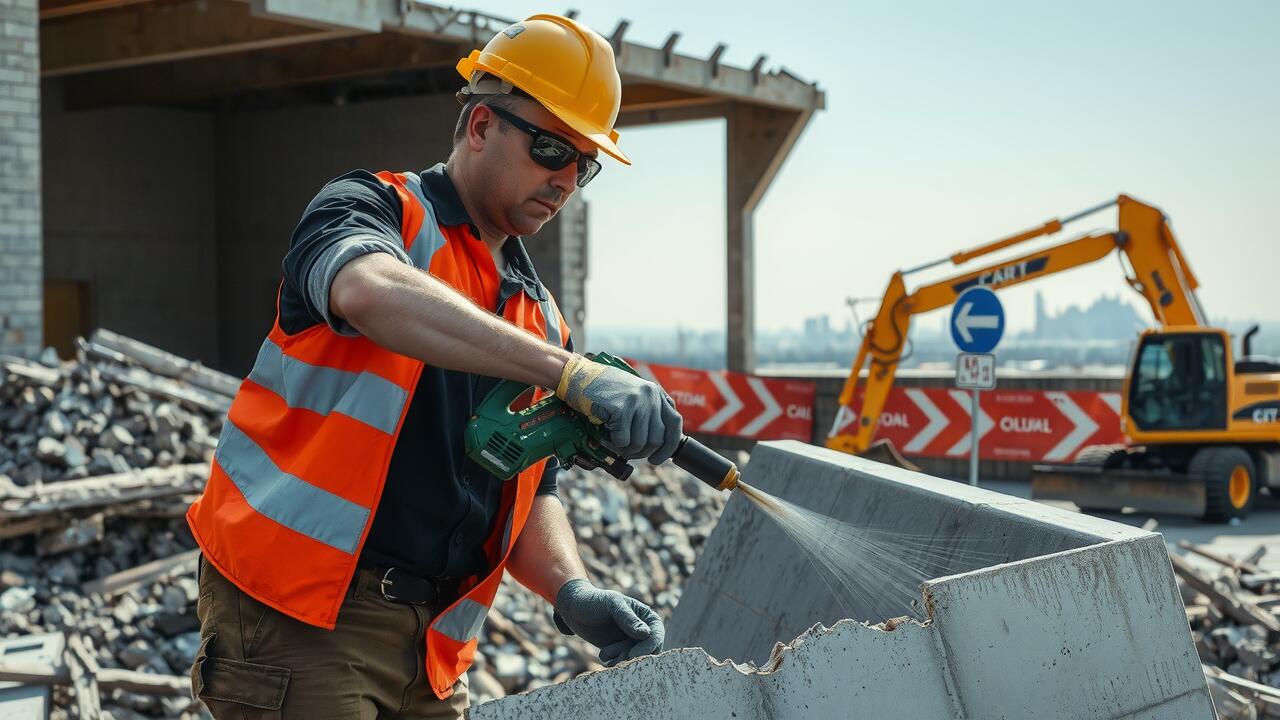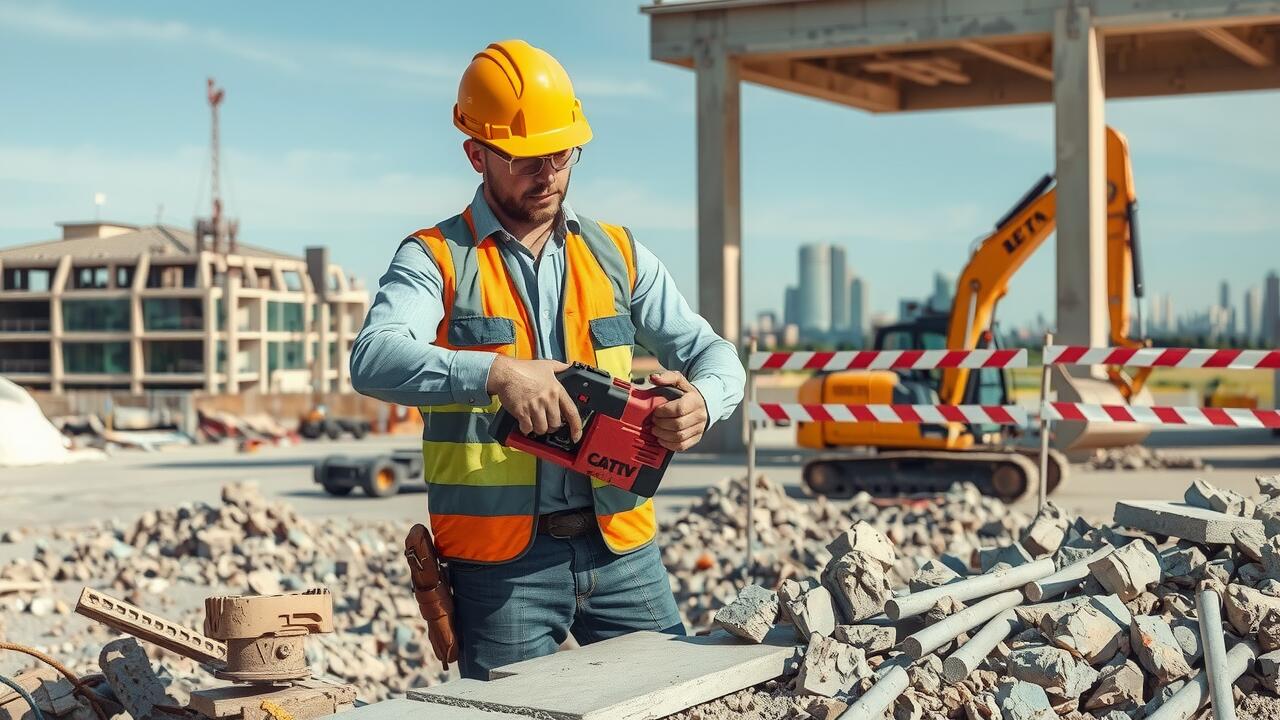
Table Of Contents
Removal Techniques for Different Situations
When tackling concrete demolition, the technique you choose largely depends on the size and thickness of the concrete slab. For smaller areas or lighter structures, manual methods such as using a sledgehammer or pry bar can suffice. These tools allow for precise control and can be effective for breaking up thin concrete layers. For thicker and larger sections, power tools such as jackhammers or concrete saws offer greater efficiency. These tools minimize physical strain and expedite the process, making them ideal for significant demolition tasks.
In situations involving concrete walls or reinforced structures, specialized equipment might be necessary. Hydraulic concrete crushers or excavators with concrete breaking attachments can break down heavy sections more easily while ensuring controlled removal. This approach reduces the risk of collateral damage to surrounding areas. Additionally, considering the local regulations on noise and vibration can help determine the best equipment to use, ensuring compliance while conducting effective concrete demolition.
Choosing the Right Technique for Your Project
Selecting the right technique for your concrete removal project depends on several factors, including the size of the area, the thickness of the concrete, and your own skill level. For simple tasks like breaking up thin slabs or small patches, a sledgehammer and chisel may suffice. In more challenging cases, such as large driveways or foundation slabs, tools like a jackhammer or concrete saw become essential for effective concrete demolition. Evaluating these aspects can help streamline your work and improve safety.
Consider the characteristics of the concrete you need to remove. If the concrete is reinforced with rebar, this will require more specialized tools, such as a concrete saw with a metal-cutting blade. For softer concrete or smaller jobs, lighter equipment might be adequate. Moreover, assess whether you need a more labor-intensive manual approach or if machinery can expedite the process. This choice impacts not just efficiency but also safety and feasibility, ensuring you tackle the demolition effectively.
Preparing the Work Area
Before beginning any concrete demolition project, it is crucial to prepare the work area properly. Remove any obstacles such as furniture, plants, or debris that could obstruct the demolition process. Ensure that you have sufficient space to maneuver equipment safely. Taking the time to clear the area reduces the risk of accidents and makes the job easier in the long run.
Establishing a safe perimeter around the demolition site enhances safety for both the workers and any bystanders. Use barriers or caution tape to mark off the area and to keep people at a safe distance from heavy machinery and falling debris. It is advisable to wear appropriate personal protective equipment, including safety goggles, gloves, and hard hats. A well-prepared work area is vital to the success of your concrete demolition project.
Tips for Setting Up Your Site Safely
Safety is paramount when preparing your work area for concrete demolition. Begin by clearing the site of any debris, furniture, or other obstacles that could pose hazards. Make sure the area is well-lit to allow for clear visibility, as poor lighting can increase the risk of accidents. Mark the perimeter of your working area with cones or tape to keep unauthorized individuals at a safe distance.
Personal protective equipment (PPE) is essential during concrete demolition. Equip yourself with safety goggles to shield your eyes from flying debris, heavy-duty gloves to protect your hands, and steel-toed boots to safeguard your feet. A dust mask or respirator will help you avoid inhaling harmful dust particles. Additionally, consider using hearing protection if you’re operating loud machinery. Setting up your site with these precautions can help ensure a safer working environment.
Disposal Methods for Removed Concrete
Disposing of removed concrete properly is crucial for both environmental reasons and compliance with local regulations. After concrete demolition, it’s essential to evaluate options for recycling the material. Many municipalities offer facilities that can repurpose concrete into gravel or aggregates for new construction projects. Utilizing these services helps to minimize waste and supports sustainable building practices.
If recycling isn’t a viable option, it may be necessary to hire a junk removal service that specializes in construction debris. These services often have the equipment needed to transport heavy loads safely. Alternatively, renting a dumpster specifically designed for concrete disposal can streamline the process. Ensuring that disposal methods align with local laws will prevent any potential fines or complications after the project is complete.
Best Practices for Disposing of Concrete Waste
Disposing of concrete waste responsibly is essential for both environmental sustainability and compliance with local regulations. After concrete demolition, you should assess the material for potential recycling. Many concrete recycling facilities can repurpose the material for new construction projects. This not only reduces landfill waste but also supports eco-friendly building practices. Ensuring that your concrete is free of contaminants will make it more acceptable for recycling.
For any debris that cannot be recycled, it is vital to use proper disposal methods. Many municipalities offer specific guidelines for disposing of construction waste, including concrete. It is advisable to contact local waste management services for recommendations on where to take unusable material. Utilizing a designated concrete dumpster can simplify the process and help prevent illegal dumping, which carries significant fines and environmental penalties.
FAQS
What tools are essential for DIY concrete removal?
Essential tools for DIY concrete removal include a jackhammer or sledgehammer, concrete saw, chisel, pry bar, safety goggles, gloves, and a dust mask. Depending on the size of the project, a concrete grinder may also be useful.
How do I choose the right technique for removing concrete?
The right technique depends on the size and thickness of the concrete, as well as the surrounding environment. For small, thin slabs, chiseling may suffice, while thicker or larger areas may require a jackhammer or concrete saw.
What safety precautions should I take when preparing my work area?
To ensure safety, clear the area of any obstacles, wear appropriate personal protective equipment (PPE) such as gloves and goggles, and ensure proper ventilation to reduce dust inhalation.
What are the best practices for disposing of removed concrete?
Best practices for disposing of concrete include checking local regulations, recycling when possible, using a designated disposal site, and ensuring that the concrete is free of contaminants before disposal.
Can I reuse or recycle the concrete I remove?
Yes, many concrete removal projects allow for recycling or reusing the material. You can repurpose concrete for landscaping, create aggregate for new concrete, or take it to a recycling center that processes concrete waste.

